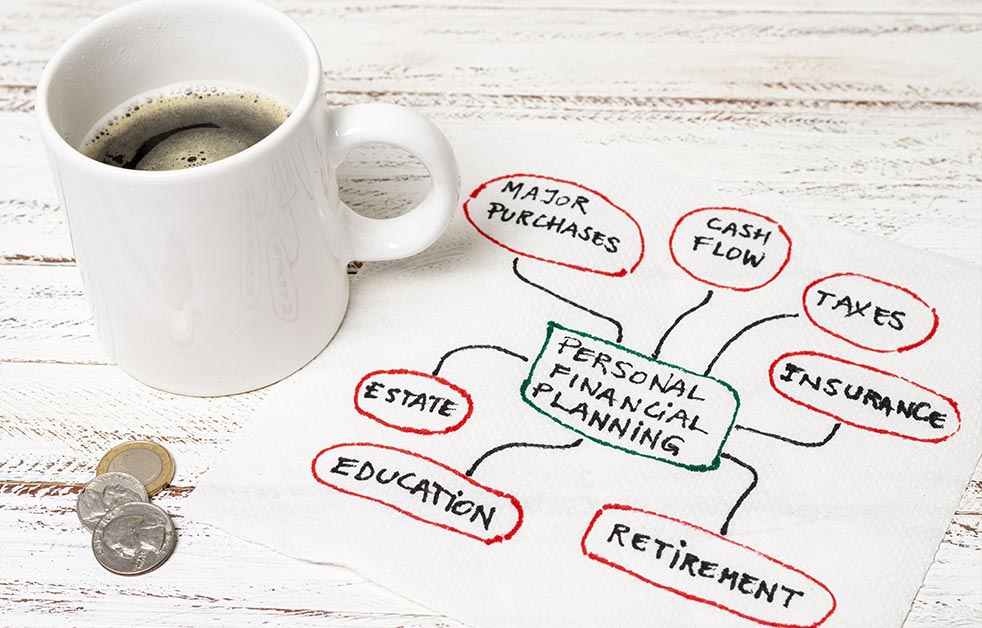Don't let emotions rule your investment plan
Oct 14, 2020Don’t let emotions rule your investment plan
When it comes to investing, two things are for sure: markets will fluctuate and taking part in those markets involves risk.
Although investing can be an emotional experience—you’re putting your hard-earned money in investments to meet your financial goals—it’s important not to let emotions rule your investment strategy. Remember that even professionals don’t know for sure when prices will go up and down. Although markets inevitably dip, they also tend to recover – and you want to be there when they do. That’s why it’s important to develop a solid plan and stick to it over the long-term.
When it comes to investing, avoid emotional decisions
Working with your advisor to come up with a solid investment plan can help you avoid emotional investing: letting your emotions (like excitement when markets are up and panic or fear when markets are down) overpower your rational thinking.
Think about the advice to buy low and sell high. Studies have shown the average investor gives into excitement, jumps on the bandwagon and buys a stock when it’s performing well (in other words, they buy high). When the price drops, that same investor often gives into fear, panics and sells the stock (they sell low).1 Having a plan in place can help you avoid this type of emotional thinking and stay invested for the long-term. In fact, giving into those emotions can be risky in and of itself. A plan can also help you proactively address the risks that come with investing, so you can focus on long-term growth, without letting your emotions lead the way.
How can I avoid emotional investing?
To view the markets while keeping an even keel, its important to work with your advisor and invest based on your willingness and ability to take risk. (You can think of your risk tolerance as how much you would think or worry about your investments, while your risk capacity is your ability to survive a financial loss if the market takes a steep drop.)
Let’s look at some strategies to help you take the emotions out of investing.
Dollar-cost averaging
With dollar-cost averaging, you work with your advisor to make pre-determined contributions (the same amount of money each time) at regular, consistent times. For example, you might decide with your advisor that it would be best to contribute $50 every other week.
By making regular contributions, you’re investing at different points in the market cycle. When markets are on their way up, your contributions are getting you returns, and since you’re investing a fixed dollar amount, you’re purchasing less units when prices are higher. When markets are on their way down, you’re purchasing more shares at lower prices, following the advice to buy low and sell high.
Compared to making one or two contributions per year, dollar-cost averaging helps you invest through all stages of the market cycle, neutralizing short-term volatility in the broader market. When you stay the course, you’re setting yourself up for higher long-term returns.
Diversification
Another strategy you can use to help take the emotions out if investing is diversification (or, in other words, mixing it up). You can think of diversification in two ways:
- Investment type. Your investment type refers to what you’re invested in and where. Holding different investments (like stocks, bonds, mortgages, real estate and cash – which can be found in mutual funds or segregated funds) is one way to diversify your portfolio. Investing in different industries, sectors, regions and countries is another way to diversify your portfolio. By diversifying in a variety of investment types you’re not simply putting all your eggs in one basket.
- Asset allocation. Asset allocation refers to how your investment portfolio is divvied up among different investment types. Financial portfolios are traditionally divided into three main categories: equities, fixed income (which includes bonds) and cash.
· Equities generally consist of?stocks in publicly-held companies.?Equities can offer?potentially?greater returns?and?greater risk. This is?because?the stock market (where equities are traded)?can be?unstable.
· Fixed income investments offer less upside, but they’re generally more stable; this is especially the case when it comes to government or high-quality corporate bonds.
· Cash or cash-like instruments, such as term deposits, offer limited but guaranteed growth. Cash also offers a safe way to park money if your nearing retirement or for shorter-term goals, like saving to buy a house.
With a combination of these asset allocation types in your portfolio, you can potentially increase your returns and lower your risk to market volatility. This can help lower your stress levels and increase your potential for long-term investment success.
But it’s important to remember that diversification is more than picking different stocks and bonds. It’s the strategy of being diversified not only within your investment types but also within your asset allocation to maximize returns and lower your risk.
Keep your eye on the prize
Financial markets can bounce around daily but historically, they recover over time. If you develop an investment plan and focus on long-term growth, you’ll be less likely to worry or think emotionally when markets go through short-term changes.
The good news is that you don’t have to do this alone. Talk to your advisor about creating a sound investment strategy—it can help you spend less time thinking (or even worse, worrying) about money and more time feeling confident in your investments.
This information is general in nature and is intended for informational purposes only. For specific situations you should consult the appropriate legal, accounting or tax advisor.






